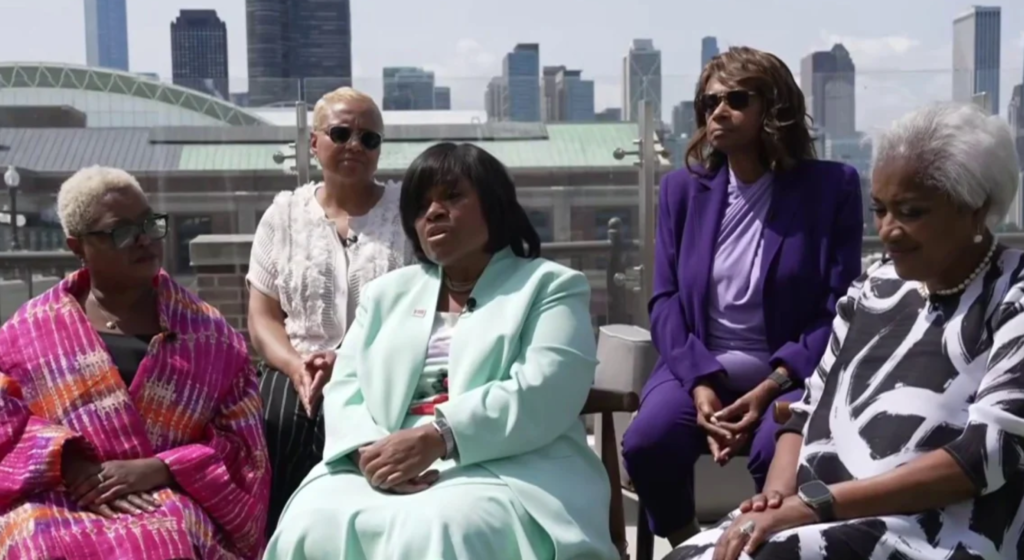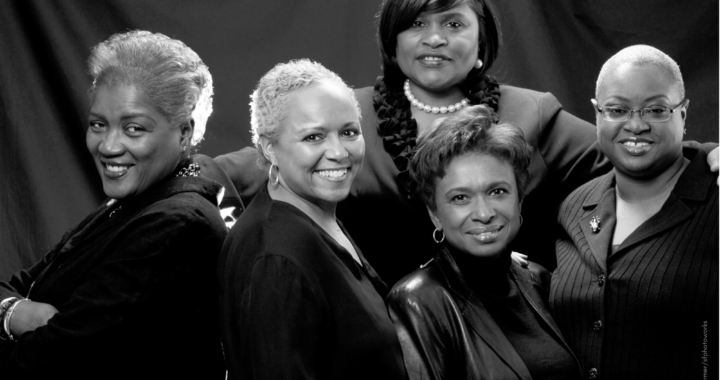The Colored Girls
Vice President Kamala Harris’ presence at the DNC wasn’t just a nod to diversity; it was a powerful statement of the Democratic Party’s commitment to progress. The influence of civil rights leaders like Jessie Jackson and Al Sharpton, combined with the strategic brilliance of the “Colored Girls”—Minyon Moore, Donna Brazile, Leah Daughtry, Tina Flournoy, and Yolanda Caraway—has been pivotal in energizing the Democratic base. These women, with their deep roots in activism and politics, have become the backbone of the party’s efforts to mobilize voters, especially in communities of color. Their collective efforts are a testament to the power of representation and the importance of every vote.
When Vice President Kamala Harris took the stage at the DNC, it wasn’t just about politics; it was about legacy.
A legacy woven by trailblazers like Jessie Jackson and Al Sharpton, who have fought tirelessly for civil rights, and by the remarkable “Colored Girls”—a powerhouse group of women who’ve become the Democratic Party’s secret weapon.

These women—Minyon Moore, Donna Brazile, Leah Daughtry, Tina Flournoy, and Yolanda Caraway—aren’t just political strategists; they’re the architects of change. They’ve been in the trenches, working behind the scenes, making sure that the voices of Black and Brown communities are not only heard but amplified. And in this election, their influence is more critical than ever.
Imagine the DNC as a finely tuned orchestra, with each note carefully crafted to create a symphony of hope, unity, and progress. The “Colored Girls” are the conductors, ensuring that every section plays its part. They’ve spent years honing their craft, understanding the nuances of voter behavior, and tapping into the emotional pulse of the electorate. Their strategy is simple yet profound: make every voter feel seen, heard, and valued.
Jessie Jackson and Al Sharpton have laid the groundwork, rallying the base and reminding them of the stakes. They’re the drumbeat, the constant reminder of why this fight matters. But it’s the “Colored Girls” who are orchestrating the melody, crafting a narrative that resonates with the lived experiences of millions of Americans. They know that to get people to the polls, you have to do more than just talk about policy—you have to connect on a personal level.
It’s like cooking a family recipe passed down through generations. You don’t just follow the instructions; you add your own flavor, your own twist. That’s what these women are doing—infusing the Democratic message with authenticity, passion, and a deep understanding of what drives people to action. They know that the key to victory isn’t just in the big speeches or the grand promises; it’s in the one-on-one conversations, the community events, and the personal stories that make politics real for everyday people.
And it’s working. Voters are responding. They’re turning out in record numbers, motivated not just by fear of what could be lost, but by hope for what could be gained. The “Colored Girls” have tapped into something powerful—a sense of community, a shared purpose, and a belief that together, we can build a better future.
As Kamala Harris continues to make history, she does so standing on the shoulders of giants. Giants like Jessie Jackson, Al Sharpton, and the “Colored Girls” who’ve paved the way. Their influence is undeniable, their impact immeasurable. And as we head into the next election, their work will be more important than ever in ensuring that the Democratic base is not just motivated, but mobilized and ready to vote.
In this pivotal moment, the “Colored Girls” remind us all of the power of representation, the importance of every vote, and the strength that comes from standing together. They’re not just influencing the DNC—they’re shaping the future of our democracy.

